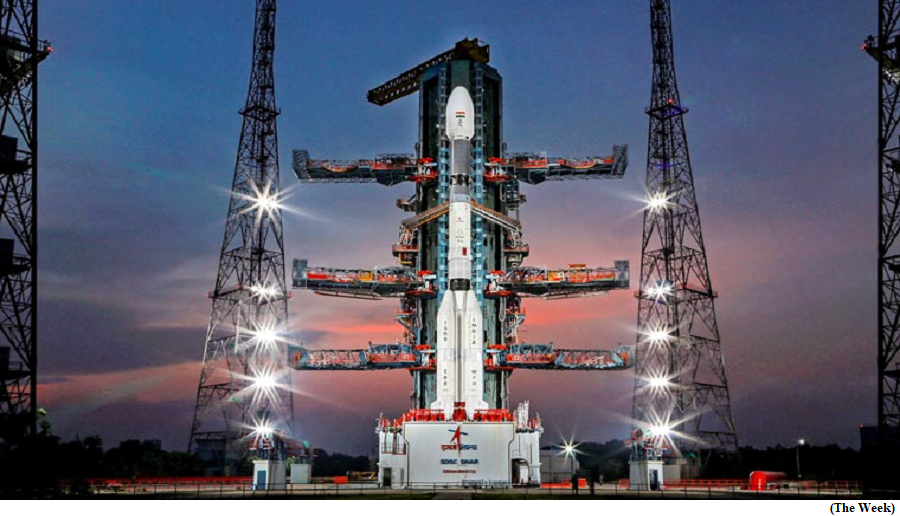Saansad Adarsh Gram Yojana aims to create holistically developed model Gram Panchayats (GS Paper 3, Government Scheme)

Why in news?
- Recently, the Union Minister of State for Rural Development, in a written reply in Lok Sabha discussed the Saansad Adarsh Gram Yojana (SAGY).
- It aims to create holistically developed model Gram Panchayats across the country.
Salient features:
- It is a unique scheme of the Ministry of Rural Development wherein, for the first time, the leadership, capacity, commitment and energy of the Members of Parliament are being leveraged directly for development at the Gram Panchayat level.
- The goal of Saansad Adarsh Gram Yojana (SAGY) is to translate the comprehensive and organic vision of Mahatma Gandhi on village development into reality.
- These ‘Adarsh Grams’ are desired to serve as ‘nucleus of health, cleanliness, greenery and cordiality’ within the village community and become schools of local development and governance, inspiring neighbouring Gram Panchayats.
- SAGY aims at instilling certain values in the villages and their people so that villages get transformed into models for others.
- These values include ensuring the involvement of all sections of society in all aspects related to the life of the village, especially in decision-making related to governance, adhering to Antyodaya – enabling the “poorest and the weakest person” in the village to achieve well-being, affirming gender equality, ensuring respect for women, guaranteeing social justice, instilling dignity of labour and the spirit of community service and voluntarism.
- Besides, promoting a culture of cleanliness, living in consonance with nature – ensuring balance between development and ecology, preserving and promoting the local cultural heritage, inculcating mutual cooperation, self-help and self-reliance, fostering peace and harmony in the village community, bringing about transparency, accountability and probity in public life, nurturing local self-governance, adhering to the values enshrined in the Fundamental Rights and Fundamental Duties of the Indian Constitution are also desired.
Key Objectives of SAGY are:
- To substantially improve the standard of living and quality of life of all sections of the population through improved basic amenities, higher productivity, enhanced human development, better livelihood opportunities, reduced disparities, access to rights and entitlements, wider social mobilization and enriched Social Capital.
- To generate models of local level development and effective local governance, which can motivate and inspire neighbouring Gram Panchayats to learn and adapt.
- To trigger processes, which lead to holistic development of the identified Gram Panchayats.
Approach:
- Leveraging the leadership, capacity, commitment and energy of the Members of Parliament (MP) to develop model Gram Panchayats.
- Engaging with and mobilizing the community for participatory local level development.
- Converging different government programmes as well as private and voluntary initiatives to achieve comprehensive development in tune with people’s aspirations and local potential.
- Building partnerships with voluntary organizations, cooperatives and academic and research institutions.
- Focusing on outcomes and sustainability
Implementation:
- The Members of Parliament have identified 3,390 Gram Panchayats across the country under SAGY since its inception.
- Under the Saansad Adarsh Gram Yojana framework, the development of Gram Panchayats is envisaged through convergence and implementation of existing Government Schemes and Programmes under the administrative control of respective Ministries without allocating additional funds
- As per the Guidelines, the responsibility of implementing the SAGY largely depends on the functionaries concerned at different levels.
Functioning:
- As the entire programme is implemented in a convergence model, the District Collector plays a significant role. In the SAGY guidelines, as per component 10 (d) the District Collector is the nodal officer for implementing SAGY.
- The District collector conducts a monthly review meeting with representatives of the participating line departments. The Members of Parliament concerned chair the review meetings. The heads of the GPs concerned are invited for these monthly meetings. The Ministry has provided training on SAGY implementation process to the Gram Panchayat heads.
- The Ministry has prepared a compendium on SAGY containing supporting materials to help various stakeholders in the implementation of SAGY and distributed the same amongst the participants of the said training programmes.
ISRO to illuminate cosmic mysteries of black holes with launch of XPoSat mission
(GS Paper 3, Science and Technology)
Why in news?
- India’s first X-Ray Polarimeter Satellite (XPoSat) will delve into the mysteries of cosmic X-ray sources.
- The Indian Space Research Organisation (ISRO) has planned this mission to study the polarisation of X-rays from astronomical entities, such as neutron stars, black holes, and other energetic phenomena.

Details:
- The XPoSat mission is expected to be launched in the final weeks of December, aboard a Polar Satellite Launch Vehicle (PSLV).
- It will carry two scientific payloads into a low Earth orbit at an altitude of approximately 650 kilometers. These instruments are designed to operate for around five years, providing valuable data that will enhance our understanding of the universe.
Payloads:
POLIX:
- The primary payload, POLIX (Polarimeter Instrument in X-rays), developed by the Raman Research Institute (RRI) in collaboration with ISRO's U R Rao Satellite Centre (URSC), is set to measure the degree and angle of polarisation in the medium X-ray energy range of 8-30 keV.
- This instrument is a Thomson X-ray polarimeter, which includes a collimator, a scatterer, and four X-ray proportional counter detectors.
- POLIX is expected to observe about 40 bright astronomical sources during the mission's lifetime, making it the first payload dedicated to medium X-ray band polarimetry measurements.
XSPECT:
- Complementing POLIX, the XSPECT (X-ray Spectroscopy and Timing) payload will provide spectroscopic information and timing of soft X-rays in the energy range of 0.8-15 keV.
- Developed by ISRO's Space Astronomy Group, URSC, XSPECT aims to understand the long-term behavior of X-ray sources through correlation of timing characteristics with spectral state changes and emission line variations.
Significance:
- XPoSat's mission objectives are multifaceted, including the measurement of X-ray polarisation, which is a powerful tool that allows astronomers to infer information about celestial objects, from their magnetic fields to the nature of the accelerator responsible for energising the electrons involved in radiation and scattering.
- The mission will also conduct long-term spectral and temporal studies of cosmic X-ray sources, bridging an energy gap in detection capability between existing soft and hard X-ray polarimeters.
- The observatory will focus on the 50 brightest known sources in the universe, including pulsars, black hole X-ray binaries, active galactic nuclei, and non-thermal supernova remnants.
Way Forward:
- This endeavor places India at the forefront of X-ray polarimetry, following NASA’s Imaging X-ray Polarimetry Explorer (IXPE), making XPoSat the world's second mission dedicated to such measurements.
Glaciers shrank 1 m a year in a decade: WMO
(GS Paper 3, Environment)
Why in news?
- Recently, the World Meteorological Organisation released a report titled, ‘The Global Climate 2011-2020: A Decade of Acceleration’.

Details:
- It said the 2011-2020 decade, though warmest ever recorded in history, saw the lowest number of deaths from extreme events.
- It attributed this to an improvement in the “early warning system” driven by improvements in forecasting and better disaster management.
- In India, for instance, improvements in forecasting cyclone formation and the time it took to reach land have led to greater preparedness and evacuation of those most at risk.
Key Highlights:
- The 2011-2020 decade was the first since 1950 when there was not a single short-term event with 10,000 deaths or more.
- The report also says that this was the first decade that the depleted ozone hole visibly showed recovery. Glaciers that were measured around the world thinned by approximately 1 metre per year on an average between 2011 and 2020.
- Greenland and Antarctica lost 38% more ice during the period than during the 2001-2010 period.
- The report also had a mention of the 2021 Uttarakhand rock-avalanche that was triggered from a breach in the Nanda Devi glacier in the Himalayas.
Heatwaves:
- The report further underlined that human-caused climate change significantly increased the risks from extreme heat events.
- Heatwaves were responsible for the highest number of human casualties, while tropical cyclones caused the most economic damage.
Climate financing:
- Public and private climate finance almost doubled during the period.
- However, it needed to increase at least seven times by the end of this decade to achieve climate objectives, including keeping global temperature from rising by more than 1.5 degrees Celsius by the end of the century.




